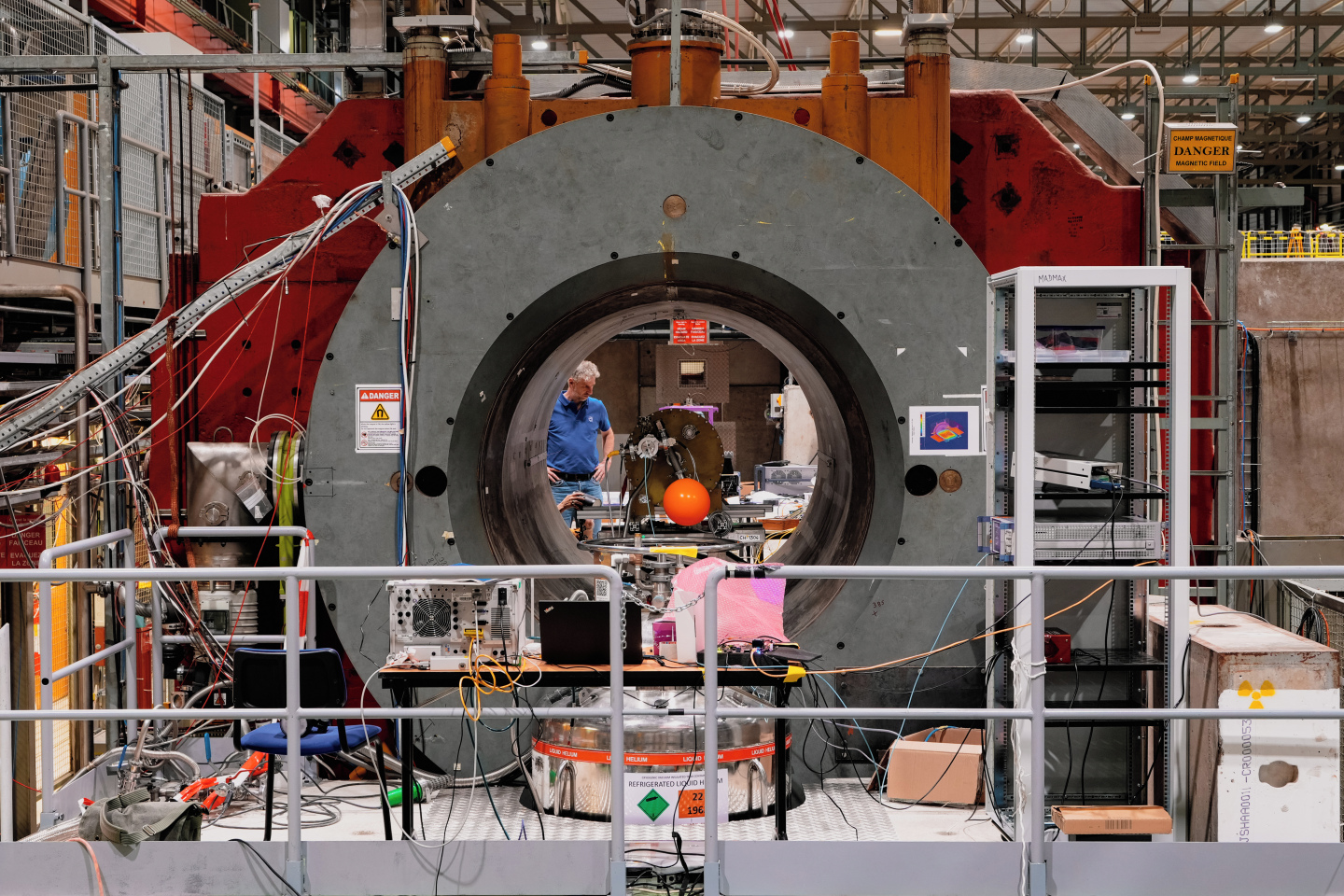Imagine a set of classic Matryoshka dolls, each containing a smaller doll inside it. MADMAX – not the movie, but an experiment hosted in CERN’s largest experimental area, the SPS North Area – employs a similar technique to search for axions, a leading candidate for dark matter.
MADMAX (Magnetized Disk and Mirror Axion experiment) consists of multiple dielectric disks and a focusing mirror called the booster. Like the smaller dolls nestled within the larger ones, the booster is surrounded by an inner and outer vessel. There is a vacuum between these vessels to allow physics data taking at very low temperatures. Finally, the giant Morpurgo magnet serves as the outermost doll, providing the magnetic field essential for the experiment's operation. The Morpurgo magnet is the largest warm bore dipole in the world, with a 1.6-tesla magnetic field, and is mainly used to test subdetectors of the ATLAS experiment.
In February and March this year, the two new prototypes of MADMAX have come into action to collect physics data at room temperature and, for the first time, at close to liquid helium temperature.
“We used Closed Booster 200, our new 200-mm-disk prototype, to collect physics data at room temperature, and Closed Booster 100, our 100-mm-disk prototype, to collect data close to the temperature of liquid helium, at around 10 K (about -263 °C). At this temperature, the background thermal noise is lower than at room temperature, significantly increasing the sensitivity to axions,” explains Pascal Pralavorio, a physicist from the MADMAX collaboration.
The collected data was discussed in the MADMAX collaboration meeting held at CERN in March this year. The data is currently being analysed and the collaboration looks forward to sharing its physics results in the future.
In the last decade, physicists have explored several experimental approaches, such as the CERN Axion Solar Telescope, to search for axions. To date, no experiment has succeeded in finding them. If axions are discovered, it would have profound implications for our understanding of both particle physics and cosmology. Firstly, it would validate the existence of a new particle predicted by theorists more than 40 years ago, confirming our understanding of fundamental forces in the Universe. Secondly, since axions are considered a leading candidate for dark matter, their discovery could provide a direct explanation for this elusive substance that makes up a significant portion of the Universe.
MADMAX is a relatively young collaboration that started in 2017. Since 2020, CERN has provided the Morpurgo magnet to the experiment during technical stops, when the SPS beam is shut down. MADMAX benefits from a strong participation from across CERN for cryogenics, magnets, electrical power convertors, and safety and operations. It is one of the few experiments at CERN that are well suited for tests independent of beam time, as it does not require a particle beam from an accelerator.
The MADMAX collaboration is currently discussing with the SPS Committee the possibility of using the Morpurgo magnet for another programme of data taking during the Long Shutdown 3 of CERN’s accelerator complex, which will take place from 2026 to 2028.

